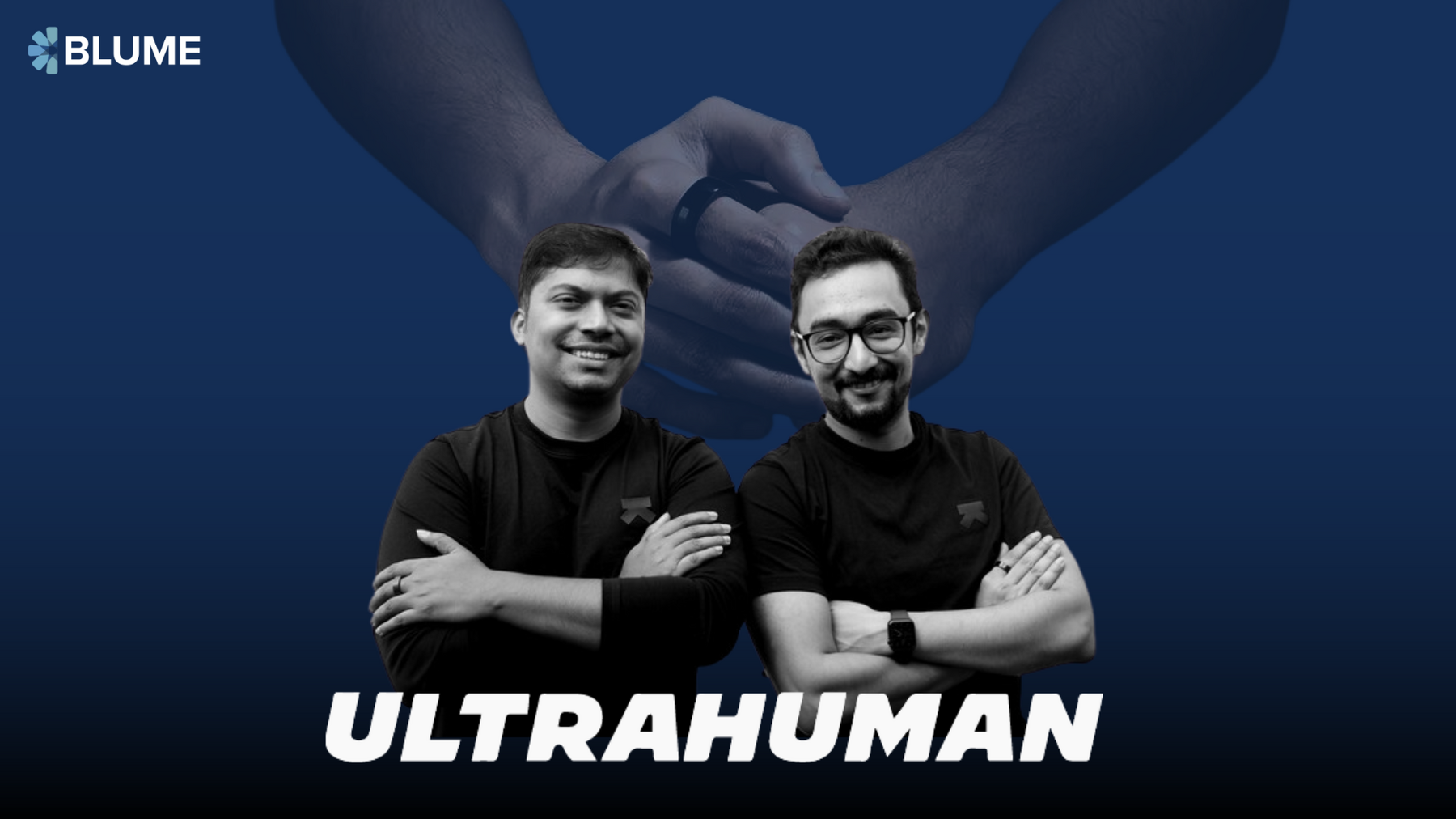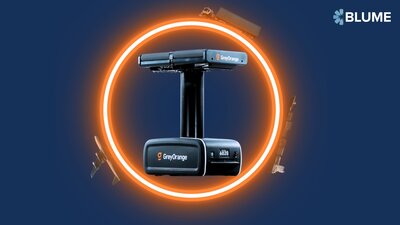Muay Thai, CrossFit, and the Birth of a Health Revolution
On one side, there’s a snake mountain.
On the other, there’s a beach.
The story of Ultrahuman starts in Thailand.
More specifically, at a martial arts camp called Tiger Muay Thai, where Mohit Kumar, co-founder and CEO of Ultrahuman, was learning the craft of muay thai.
“I trained for 6 or 8 hours a day, chilled at the beach at the end, and then I thought maybe wisdom would come, but no wisdom came,” he remarks.
Wisdom might not have arrived. But an insight did, which was not related to hardware at all.
Mohit observed how non-diabetic athletes used glucose meters, which made very little sense on the surface. The devices were similar, but the interpretation of the data was different.
While Mohit was at the camp, his co-founder in India, Vatsal Singhal, became interested in CrossFit, working on his health.
As we see in other successful co-founder pairs, Vatsal and Mohit have known each other for quite a long time. In fact, this isn’t even their first start-up together.
They went to the same college and built Runnr, a Blume Fund II portfolio company acquired by the foodtech giant Zomato. They stayed on at Zomato for close to two years, building its food delivery business, and then took a break when Mohit went to the martial arts camp.
During their respective breaks, they quickly realized that health monitoring was broken and only a select few had access to data about their health. The data that they accessed was quite convoluted and not actionable. So, they built a core thesis - getting people access to their health data in a simplified way. Mohit explains: “If you look at our form factors, there's a patch on the tricep, there is a ring. So these are all passive devices, measuring your health as you're going about your life and not stopping you to ask for your input.”
Speaking about the dynamic founder duo, Karthik Reddy, Blume’s co-founder and managing partner, remarks, “Mohit and Vatsal not only rewarded Fund II with the fastest exit, with an acquisition by Zomato, but also continued to thrive and build the delivery business for Zomato, helping them compete effectively with Swiggy. Mohit kept us abreast of his passion for health and fitness at a personal level and how he hoped to build something meaningful and global. It's a relatively easy decision to back such founders where history is established.”
“Sometimes it's the sheer audacity of entrepreneurs, and not anything specific about the product, especially at such an early phase of the opportunity. In the pandemic, the current CBO, Bhuvan was moving from KKR to Ultrahuman. As an ex-med devices and healthcare expert, I could see his passion for the opportunity, and I was also impressed that Mohit had managed to convince him of the vision that early in the journey. A deep knowledge and a desire to build a world-class health play kept coming through,” concludes Karthik.
Made with love in Bharat
It’s imperative to note here that Ultrahuman is a pandemic baby launched in 2020. But as the pandemic ripped through the world, another crisis was brewing in the background.
The global chip shortage.
There were quite a few horror stories in 2021 about manufacturing in China, where the volatility caused by COVID and chip shortage would often lead to consignments getting stuck for months on end. Products will lie unshipped in the warehouses of the Chinese manufacturers, forcing companies to abandon hopes of launching anything new.
With the odds stacked against them, the Ultrahuman co-founders decided to take a bold step: manufacture in-house.
As with most things in-house, manufacturing under one roof would imply that the young organization had to incur a ton of capital expenditure and go through a very steep learning curve to understand how to manufacture iPhone-quality hardware in the size of a Re 1 coin packed with all types of sensors.
In retrospect, this was perhaps the best decision as it allowed them to control costs and manage inventory. They could learn from their mistakes in the early days, bring those learning back into the manufacturing process, and improve the next batch, creating a tight feedback loop.
Of course, the journey was far from easy. Making only 20 rings daily was an uphill task in the early days. The fault rates were high, given they were building their expertise in the assembly line process and did not want to ship anything less than stellar.
The team’s customer obsession is reflected in how they nerded out on new manufacturing processes. Here’s one instance of it.
Mohit: “We realized that when we want to scale manufacturing, we would need to internalize a bunch of processes. We started a new process called vacuum casting. Basically, it is a machine that actually creates a vacuum in a normal lab. There are robotic arms that you can use to assemble the ring and can make the resin flow inside it.”
It had a tangible effect on their production cycles.
Mohit: “We had to play really carefully with all the stuff to reach a stage when we are shipping almost 10,000 plus rings monthly. That's been the scale of the journey over the last 12 to 15 months.”
I want to reiterate this.
Until a few months ago, they manufactured roughly 600 units a month. Now, that number has scaled to 10,000.
As they figured out inefficiencies and reduced redundancies, their capabilities grew. And the Ultrahuman team decided to give their manufacturing unit a name.
The Ultrafactory.
Mohit: “The Ultrafactory started pretty much out of our headquarters. We didn't have manufacturing space. But these were biosensor manufacturing facilities. So thankfully, we didn't need a whole lot of space.”
But there’s only so far you can go alone. After the success of the Ultrafactory, they went looking for synergies in the biohealth space.
They found success with a young company in Pune. LazyCo was making a smart ring for Internet of Things use cases. The Ultrahuman team had some fruitful talks with LazyCo, sharing curiosity, rigor, and, of course, bandwidth, and ended up acquiring them in 2022.
Curiosity and innovation are truly the major drivers of Ultrahuman as an organization.
But what inspires them?
Prioritizing talent density over numbers
Ultrahuman believes in a culture of talent density rather than the number of people. They take inspiration from the Indian Space Research Organization (ISRO), known for building cutting-edge products with much fewer resources than their global counterparts. They don’t resort to jugaad (quick fixes) but smart engineering by using a finite amount of resources to generate infinite outcomes. So, having a dense talent pool becomes a must-have for Ultrahuman.
Endlessly raising money and laying off is certainly not their style of building a successful company.
Mohit gave us a flavor of this: “For the longest time, every town hall I did within the company, I said, “Look, guys, if we don't manage with these people, we will have a layoff in the future. So do you want to do that, or do you want to win through smart engineering?” And smart engineering was always the winner.”
But this was not just restricted to engineering.
At Ultrahuman, ‘cross-functional’ learning is the default, not the exception. “We want a software engineer to learn about sensor technology. We want a marketing person to learn about bioengineering. We want somebody in bioengineering to learn more about content creation. We want these learnings to happen within the company; it can only happen with the long-term outlook and not look, guys, six-month runway, running out of cash.” Mohit chipped in.
The ‘value of people’ is always the core metric. Come funding summer or funding winter.
Mohit and Vatsal devised a crucial guardrail as second-time entrepreneurs: wealth creation for all their employees, not just themselves. If their employees aren’t creating wealth, why will they be at a startup and not work for a large organization?
Cautious hiring became a big motivator for the organization; you wouldn’t want to get a person on board if you can’t possibly make them rich in the long term.
Ultrahuman had a thesis. They had a product. They had talented employees. They had investors, too.
But can they build a consumer brand?
Building the Ultrahuman Brand and Fostering 'The Cyber Army
Mohit believes that in the early days, the team focused much more on brand tactics than brand vision. While obsessing over colors, tonality, or even typography, they were missing out on a key piece of the puzzle: who is their ideal user, and what are their motivations?
The pandemic created a sudden tailwind for them, ballooning the number of people who care deeply about their health in ways never seen before.
These power users didn’t just want to achieve a goal but also track how their body clocks in the numbers. Minute by minute. Second by second. “They're not just consumers. They're also curious people. They're human beings. They have neurons. They have neuroplasticity. They can learn new things.” Mohit said.
Once they got this insight, the Ultrahuman team built their brand in this early set of power users. However, they didn’t follow the “paid promotion” route.
Mohit believes that if people with influence purchased the product with their money and spoke about it on social media, it would lead to a 1000x impact vs. any paid promotion. So, instead of chasing paid promotions, they index highly on organic mentions and user-generated content.
Along with the influencer channel, Ultrahuman famously doubled down on their community bet, creating ‘The Cyber Army.’ Approximately 40%-50% of Ultrahuman users are part of the community, a digital town square of sorts where members discuss the latest products, ask questions about health and nutrition, and even ask Mohit and Vatsal pertinent questions about the product and brand. The founders mention they’re “always on” the channel and solve any founder-addressed questions within 10 minutes.
“There's an email that goes out from my handle. It's called Quick Check-In with the Consumer. I ensure that every email gets replied to, and I have the context of every consumer.” Mohit adds.
Scaling Globally: Ultrahuman's Journey Beyond Indian Shores
Karthik Reddy of Blume believes that while the wearable/health-tracking space is heating up and many new companies are launching ring products, Ultrahuman has a distinct advantage.
Karthik: “The company's right to win is to assemble talent from a decade of wearable learnings in the market and juxtaposition it with the latest science in monitoring and measuring biomarkers that continuously show improvements in one's ability to manage their health.”
“They have to be the best integrated player globally and have the boldness to step where no one company has done before - we have watches, rings, high-end blood tests, various screening techniques, everything emerging - staying ahead of all of them in making simplicity come alive from the complexity of the human body is Ultrahuman’s right to win. Most data is dumb until someone makes it intelligent and customized - that's the mission here.”
In a market where large global smart wearables/ring companies struggle to achieve sustained profits, Ultrahuman is profitable with a ~ $31 million Annual Run Rate (ARR) and a projected ARR of $50 million by March 2024. This is a result of their belief in being frugal and engineering-driven.
Unsurprisingly, Ultrahuman is not just focusing on the Indian shores.
It has grown rapidly in the Middle East and other Asian markets like Thailand, the Philippines, and Singapore. In Q2 and Q3, they’re also planning to hop to Europe and the US.
“We think less about geographies and more about where our users are. Some of our users in India tell us that they bought the product in London, which is a very interesting insight for us. Similarly, people travel to Dubai and end up picking our products there. So it only makes sense for us to be where customers want to buy our products,” says Mohit about their global ambitions.
Fascinatingly, until six months ago, they were generating almost all their revenue from their website. Things look different now as they expand to other channels, such as retail and marketplaces. There’s a 60:40 split between their native website and other channels.
They have a sound logic to do this, too. Regardless of where they sell the product, what matters most is that the only way it can be used is with the Ultrahuman app, which creates a high-intensity flywheel of brand engagement for Ultrahuman. They expect the app to become the primary distribution channel for new products.
And they are not holding anything back when it comes to launching new products. At the recently concluded Consumer Electronics Show in Las Vegas, they announced the Ultrahuman Home, which won the Best in CES 2024 Award as soon as it was launched. This Wi-Fi router-like device is a first-of-its-kind in the wearable space that leverages home health data and correlates the home environment to an individual’s lifestyle (such as sleep and stress).
This is just the start, as they want to continue to layer new hardware on top of their software to unlock new types of health and data experiences for their customers.
Ultrahuman’s exemplary journey in just a short time has been fortified by its co-founders and their belief in the mission.
While the road to good health is long, Mohit and Vatsal will get there eventually. Resilience, be it with battling punishing supply chains or facing stiff competition, is in their blood.
They’re human, after all.







